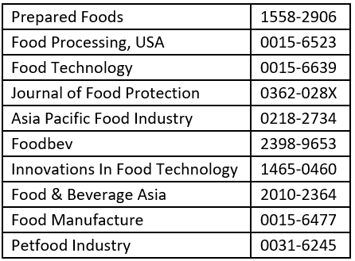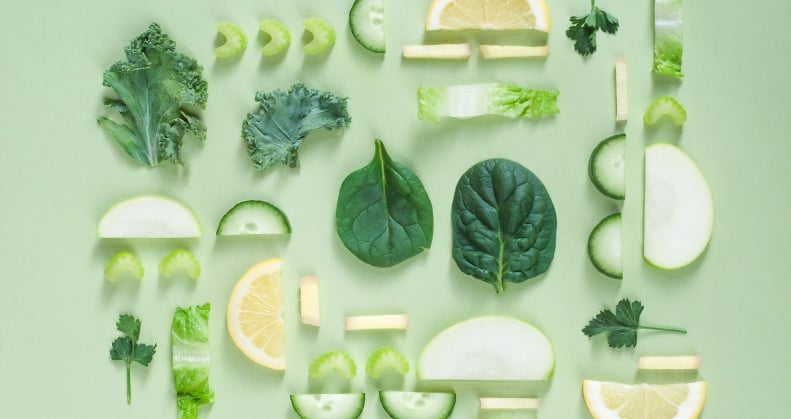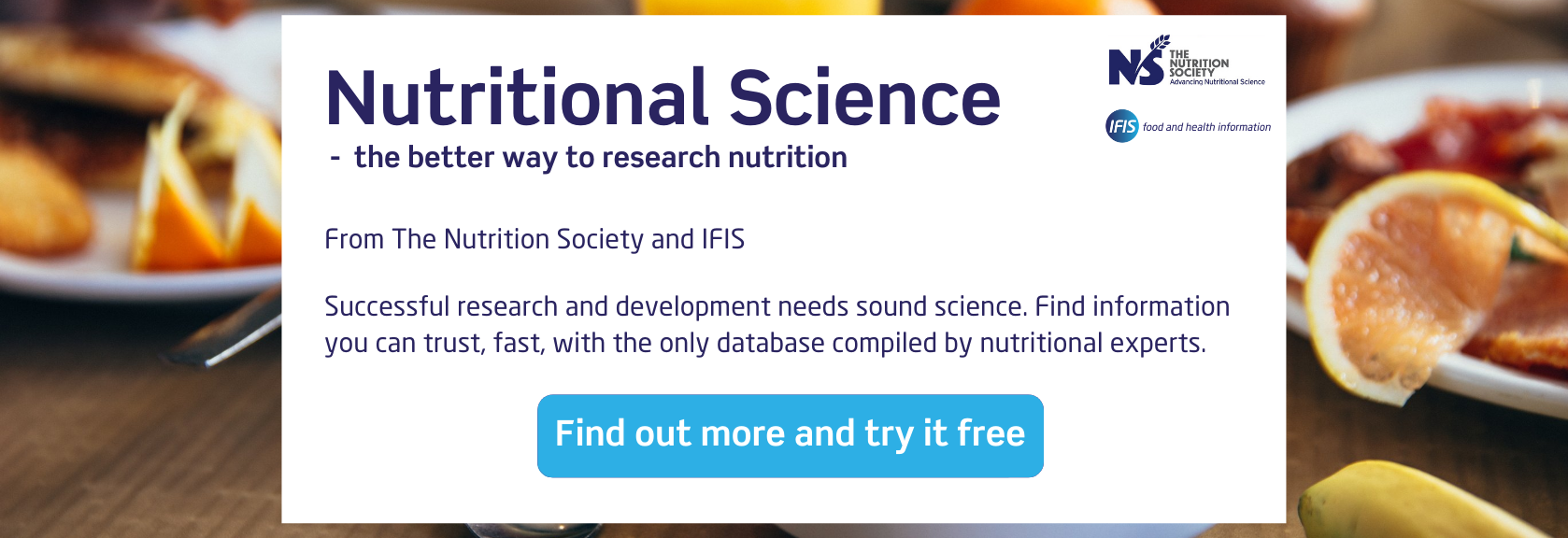For most consumers, the term “clean label” means 'healthy' and free from artificial additives or preservatives. However, there is no official definition for "clean label". When it comes to food labelling, “clean” is not a legal requirement.
It is a level of standard that is increasingly adopted by the food industry in response to consumer demand for healthier food products. But “healthy” means different things for different people and for different food products. It is open to interpretation.
"The lack of legal definition is a major issue for those in the product development and manufacturing world because “clean is in the eyes of the beholder” and what may “clean label” in one sector may not be so in another food sector."
Dr. Kantha Shelke, Senior Lecturer, Johns Hopkins University
- Dr Kantha Shelke, Senior Lecturer, John Hopkins University
So we are going to look at the scientific literature to better understand the meaning of the term "clean label". We will focus on use of the term in recent articles on bakery products and snack foods.
The drive behind the "clean label" concept
The main consumer drive behind the “clean label” movement is perceived health and wellbeing.
Consumers can feel concerned when faced with the ingredients list on product labels. The list may be a lot longer than they expect, due to ingredients added for preservation or processing.
There can also be fear and uncertainty about the technical terms for food ingredients. Food companies are legally required to use the technical terms; however, these are often unfamiliar words which are not easily linked to the names of ingredients used in home kitchens.
This difficulty in understanding applies to both "healthy" and "unhealthy" food products. Technical language can still make health-conscious consumers feel uncertain about their choices.
E-numbers are a good example of this. They are often perceived negatively by consumers. However, E-numbers are just the legal names given to food additives and many of them are naturally occuring, such as:
-
E330 - citric acid, naturally occurring in citrus fruits
-
E407 - carrageenan gum, extracted from red seaweed
-
E300 - vitamin C, naturally occurring in many foods
In other words, there is a gap in understanding.
Relevant terms from scientific literature
There is no legal definition or a single agreement about the meaning of the term “clean label”. Yet, it is increasingly used in scientific literature.
There are also these associated terms, which are better known and frequently used on food products:
-
"healthy"
-
"natural"
-
"free from additives or preservatives"
-
"non-artificial"
Recent discussions of the topic have also included the terms "organic" and "non-GMO".
Some terms apply to specific food commodities or categories, such as "gluten free", "dairy free", and "free from allergens".
Now let's delve into relevant terms in bakery products and snack foods
We looked at 200 research articles on bakery products and snacks, published between 1991 to 2020. We searched within the FSTA index and found the following terms frequently associated with the concept of "clean label".
| FSTA Subject Heading | Clean label (negative) | Clean label (positive) |
|
BAKERY PRODUCTS BAKERY PRODUCT MIXES SNACK FOODS |
synthetic, artificial, processed, artificial additives, chlorinated flour, emulsifiers |
“better for you”, natural antifungals, free from additives, essential oils, bio preservative, gluten free formulations, naturalness, dairy-free, plant-based ingredients/colourant/ proteins, plant extracts, botanical origin, biocolourant, all natural, natural sugar substitute, ascorbic acid-free bread wheat flour, novel products/processing, natural flavours, artisanal, natural ingredients, “organic suitable”, native, next-generation, naturally sourced, naturally preserved, natural hydrocolloids, natural stabiliser, natural antioxidants, sucrose reduced, low sugar, rice starch |
Taking a closer look at the contexts in which these terms are used, it suggests that plant-based ingredients have been increasingly researched for their applications in clean labelling over the past ten years.
We found that “free from” is the most frequently used term. This tends to precede something consumers which to avoid, such as "free from additives" or "free from preservatives". Other frequently used terms tended to be "healthy" and "natural".
Some examples of more technical terms:
| FSTA Subject Headings | Clean label (negative) | Clean label (positive) |
|
BAKERY PRODUCTS BAKERY PRODUCT MIXES SNACK FOODS |
550 wheat flour, polyglycerol ester [PGE], propylene glycol monoester [PGME], titanium dioxide |
non-PHO, PHO alternatives, Transglutaminase [TG], alpha-linoleic acid |
We spoke to Dr. Kantha Shelke, a senior expert in the field. Dr Shelke explained that most consumers are unaware of the difference between food grade and industrial grade chemicals. As a result, consumers can question the safety of these chemicals.
"Clean label does not necessarily mean safer. For example, the use of natural extracts to avoid synthetic colours and flavours does not make the product safer because the natural extracts have not been as extensively tested as their synthetic counterparts."
Dr. Kantha Shelke, Senior Lecturer, Johns Hopkins University
A single definition? A legal definition?
Perceptions of food products and their standards change over time. The concept of “clean label” appears to be a live phenomenon and is gradually becoming broader. We may see more or new terms emerge as research continues to develop and meet clean label demands of the future.
There is one thing which does not seem to change. There is consistent demand for "healthy" food products with minimal change to their ingredients and structure.
But as we have seen, there is uncertainty, fear and misperceptions amongst consumers. This is in part due to the technical and unfamiliar names which are required by law.
Of course, this is a bigger question with other factors to consider, but can food contents be communicated more effectively to meet the information needs of consumers? Can food labels be made free from doubt?
References (all accessible through FSTA)
- Anon (1991) Market review food additives buyers brace for changes. CPI, 1, 95-97.
- Anon (2016). Salty snacks: Europeans want them free from additives. Food Marketing & Technology. 30 (6): 18-19.
- Barston N. (2019). Driving growth in natural ingredients. Confectionery Production. 85 (3): 25-26.
- Hartman L. R. (2015). Riding the free-from movement. Food Processing. 76 (6): 41-42.
- Shelke K. (2020). World of gums and fibers. Prepared Foods. 189 (5): 46-48.
- Vierhile T. (2019). Better (for you) baking. Prepared Foods. 188 (7): 14-17.
 |
AuthorDr Mina Kalantar, Ph.D., is an independent consultant who provides advice for academic researchers, publishers and regulatory professionals in food analytics and safety. Dr Kalantar is also a content developer of food science and health research with expertise in concept analysis and literature review. |
There are more than 1000 records focusing on the clean label concept in FSTA since 2016. These records are derived from over 200 different sources, with key trade and academic titles examining developments in this area being:

IFIS blog posts related to this topic:
Header image by Dose Juice on Unsplash








